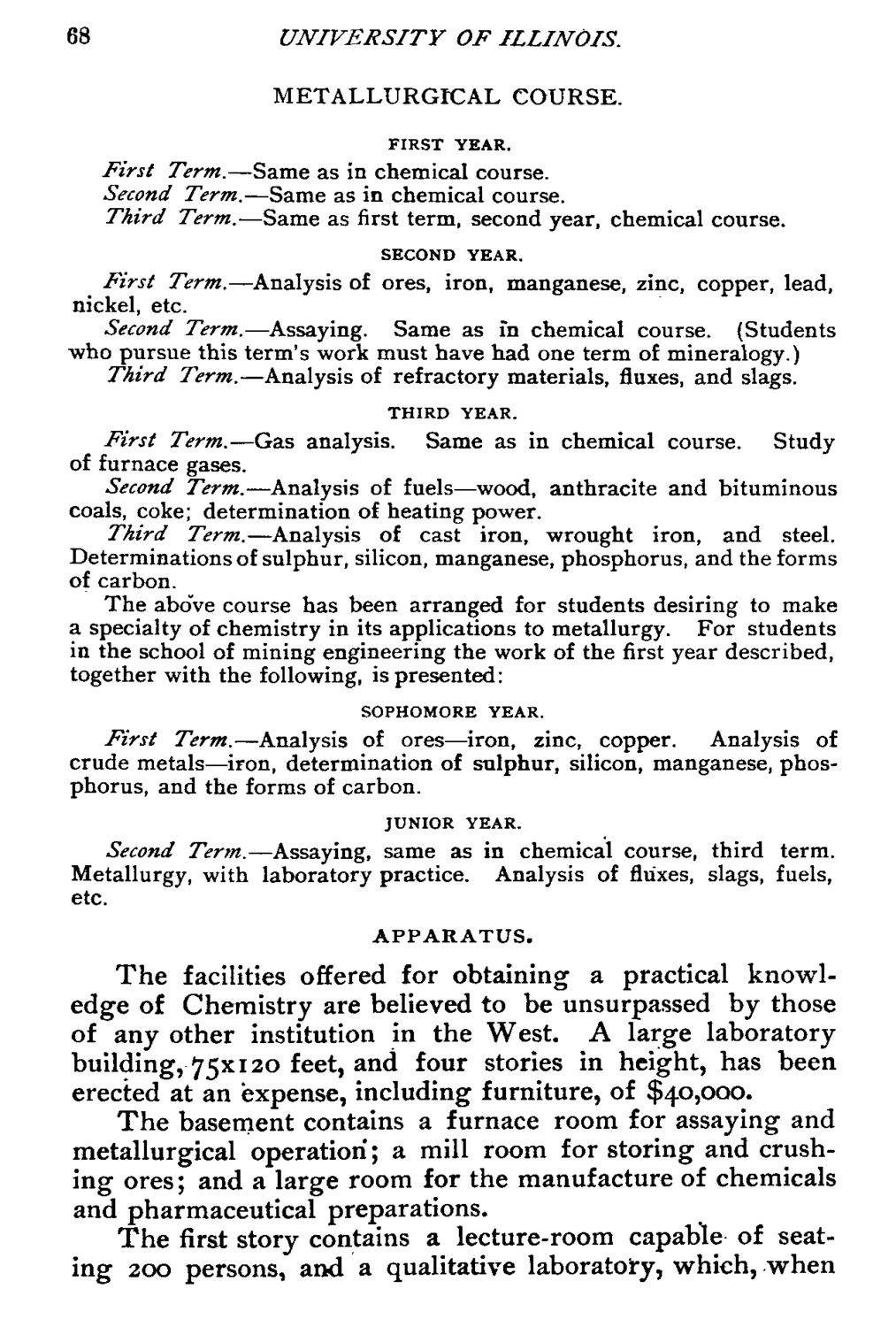| |
| |
Caption: Course Catalog - 1887-1888
This is a reduced-resolution page image for fast online browsing.

EXTRACTED TEXT FROM PAGE:
68 UNIVERSITY OF ILLINOIS. METALLURGICAL COURSE. FIRST YEAR. First Term.—Same as in chemical course. Second Term.—Same as in chemical course. Third Term.—Same as first term, second year, chemical course. SECOND YEAR. First Term.—Analysis of ores, iron, manganese, zinc, copper, lead, nickel, etc. Second Term.—Assaying. Same as in chemical course. (Students who pursue this term's work must have had one term of mineralogy.) Third Term.—Analysis of refractory materials, fluxes, and slags. THIRD YEAR. First Term.—Gas analysis. Same as in chemical course. Study of furnace gases. Second Term.—Analysis of fuels—wood, anthracite and bituminous coals, coke; determination of heating power. Third Term.—Analysis of cast iron, wrought iron, and steel. Determinations of sulphur, silicon, manganese, phosphorus, and the forms of carbon. The above course has been arranged for students desiring to make a specialty of chemistry in its applications to metallurgy. For students in the school of mining engineering the work of the first year described, together with the following, is presented: SOPHOMORE YEAR. First Term.—Analysis of ores—iron, zinc, copper. Analysis of crude metals—iron, determination of sulphur, silicon, manganese, phosphorus, and the forms of carbon. JUNIOR YEAR. Second Term.—Assaying, same as in chemical course, third term. Metallurgy, with laboratory practice. Analysis of fluxes, slags, fuels, etc. APPARATUS. The facilities offered for obtaining a practical knowledge of Chemistry are believed to be unsurpassed by those of any other institution in the West. A large laboratory building, 75x120 feet, and four stories in height, has been erected at an expense, including furniture, of $40,000. The basement contains a furnace room for assaying and metallurgical operation; a mill room for storing and crushing ores; and a large room for the manufacture of chemicals and pharmaceutical preparations. The first story contains a lecture-room capable of seating 200 persons, and a qualitative laboratory, which, when
| |